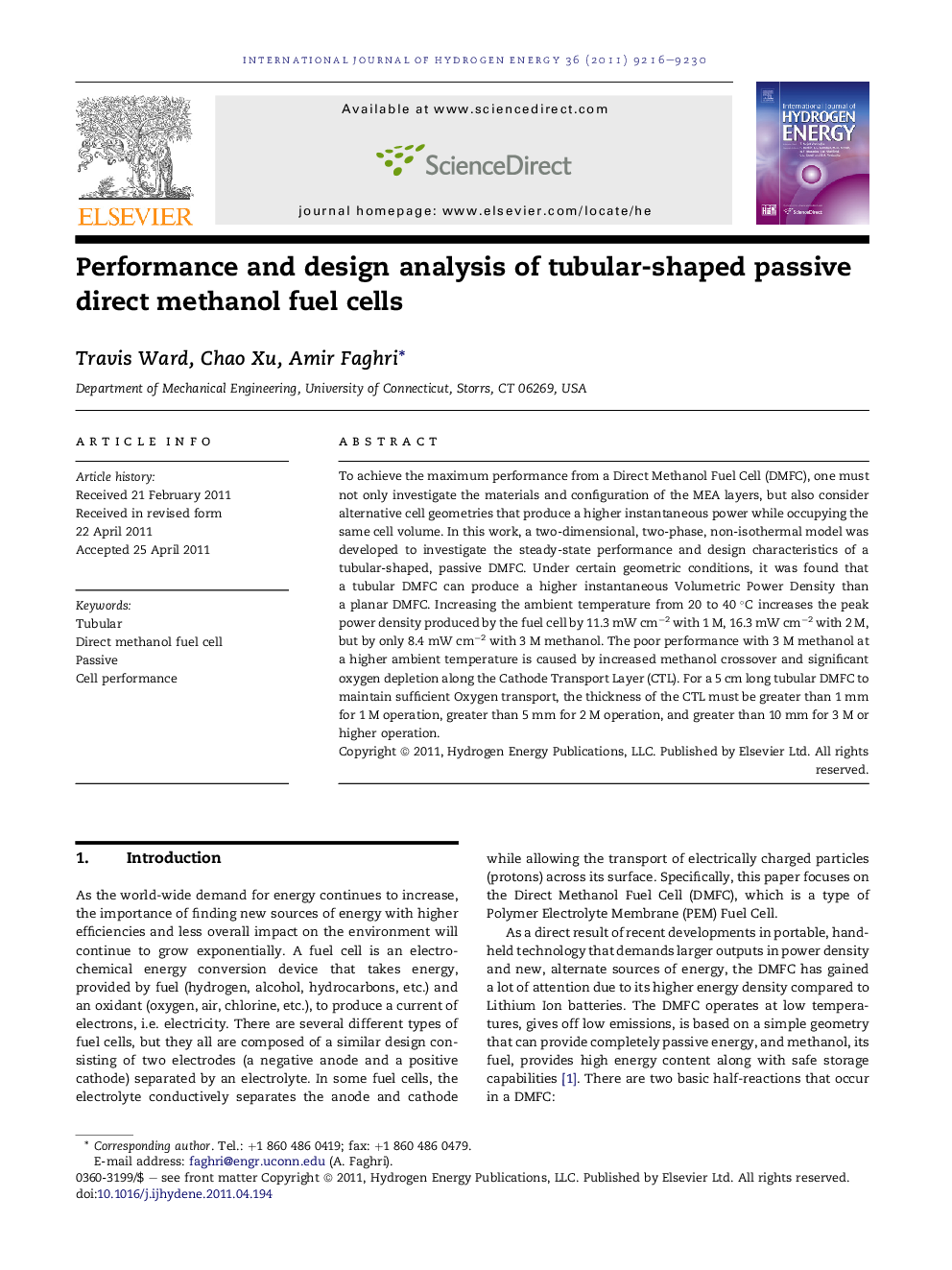| Article ID | Journal | Published Year | Pages | File Type |
|---|---|---|---|---|
| 1282518 | International Journal of Hydrogen Energy | 2011 | 15 Pages |
To achieve the maximum performance from a Direct Methanol Fuel Cell (DMFC), one must not only investigate the materials and configuration of the MEA layers, but also consider alternative cell geometries that produce a higher instantaneous power while occupying the same cell volume. In this work, a two-dimensional, two-phase, non-isothermal model was developed to investigate the steady-state performance and design characteristics of a tubular-shaped, passive DMFC. Under certain geometric conditions, it was found that a tubular DMFC can produce a higher instantaneous Volumetric Power Density than a planar DMFC. Increasing the ambient temperature from 20 to 40 °C increases the peak power density produced by the fuel cell by 11.3 mW cm−2 with 1 M, 16.3 mW cm−2 with 2 M, but by only 8.4 mW cm−2 with 3 M methanol. The poor performance with 3 M methanol at a higher ambient temperature is caused by increased methanol crossover and significant oxygen depletion along the Cathode Transport Layer (CTL). For a 5 cm long tubular DMFC to maintain sufficient Oxygen transport, the thickness of the CTL must be greater than 1 mm for 1 M operation, greater than 5 mm for 2 M operation, and greater than 10 mm for 3 M or higher operation.
► Tubular DMFCs can produce higher power for a constant volume than planar DMFCs. ► Higher ambient temperature leads to higher methanol and water crossover. ► CTL thickness limits fuel cell performance due to Oxygen depletion. ► CTL must be >1 mm for 1 M, >5 mm for 2 M, and >10 mm for 3 M operation.
